Magical Ring Of Gyges And Its Power To Be Invisible At Will
A. Sutherland - Ancient Pages.com - Gods and other mythical creatures often had the help of magical and powerful objects.
In myths and legends, these objects are often forged by dwarfs who are highly skilled craftsmen and can also provide magical functions to their works.
One such famous object is Andvaranaut, a magical ring that worked like a magnet to attract gold. The dwarf Andvari owned this ring, but it was stolen by the trickster god Loki. It forced Andvari to put a curse upon his golden treasure, including Andvaranaut. His curse meant the owner's accident and terrible death.
Another unique magical ring was Draupnir (Draupner – 'the dripper') in Norse mythology. It belonged to the god Odin and was also forged by dwarfs. Draupnir could multiply itself, meaning every ninth night, eight new rings 'drip' from Draupnir, each of the same size and weight as the original.
The Ring of Gyges is another magical artifact mentioned by the philosopher Plato in Book 2 of his work 'Republic.' It granted its owner the ability to become invisible at will.
Gyges was the founder of the Mermnad dynasty of Lydian kings, and also the first known king of the Lydian kingdom to have attempted to transform it into a mighty empire. Gyges reigned c. 680-644 BC. There are different accounts of his rise to power, but one is that of Glaucon (c. 445 BC – 4 BC), an ancient Athenian and the philosopher Plato's older brother.
His version of the story is that an unidentified ancestor of Gyges was a shepherd who served as the ruler of the ancient kingdom of Lydia (today, modern-day Turkey). After an earthquake, a cave was exposed in a mountainside where he was feeding his flock. The shepherd entered the cave and found a tomb with a bronze horse containing a corpse larger than a man wearing a golden ring.
He took the ring, and when he carried it, he suddenly realized something unusual had happened.
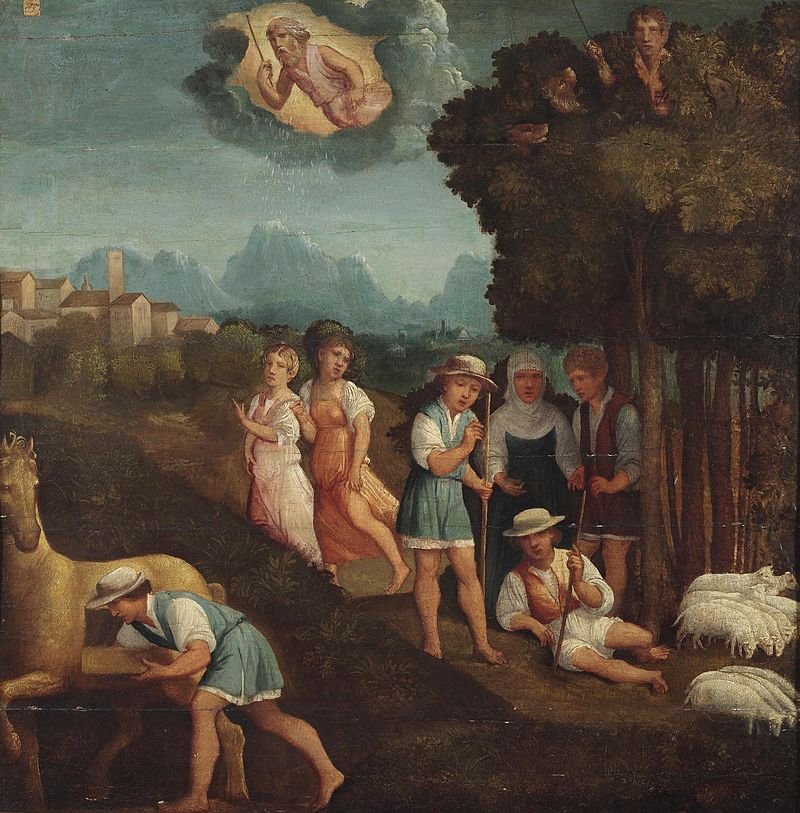 A rare depiction of the legend of Gyges finding the magic ring, Ferrara - 16th century. Author - anonymous source: dorotheum - Public Domain
A rare depiction of the legend of Gyges finding the magic ring, Ferrara - 16th century. Author - anonymous source: dorotheum - Public Domain
The ring gave him the power to become invisible by adjusting it. Then, he was chosen as one of the messengers who reported to the king the status of the flocks. With his power of invisibility, he seduced the queen, who helped him to murder the king. Thus, the shepherd became king of Lydia himself.
The magical ring known as the 'Ring of Gyges' is perhaps a mythical object, but Gyges himself existed and was a historical figure, though barely anything is known about his life and reign.
According to 'The Histories of Herodotus,' Gyges, a subordinate of King Candaules of Lydia, killed this royal figure and seized the throne. He had seduced Candaules' Queen before killing him and married her afterward.
There are different interpretations of this legend about the 'Ring of Gyges.' Through the story of this ring, one asks whether a person who finds such a ring will misuse its power.
Was it the magical ring that helped him to obtain these achievements?
In Plato's 'Republic, the role of the legend about the ring has a moral meaning. One important question arises: whether any man can be so honorable and promising that he could resist the temptation of being able to perform any act without being known or discovered.
If we assume that morality is only a social construction, the source of which is the desire to maintain one's reputation for virtue and justice, what would happen if that sanction was removed?
Would one's moral character fade away? Would an intelligent person be honest if he did not fear being caught and punished for his deeds?
The story raises several interesting moral issues. How far would we go if granted the power to become invisible?
The 'Ring of Gyges' story became food for thought for thinkers and authors. Examples include 'The Invisible Man' by H.G. Wells and the story of the ring by JRR Tolkien.
Written by – A. Sutherland AncientPages.com Staff Writer
Updated on Oct 3, 2023
Copyright © AncientPages.com All rights reserved. This material may not be published, broadcast, rewritten or redistributed in whole or part without the express written permission of AncientPages.com
Expand for referencesMore From Ancient Pages
-
 Evidence Of Carthaginian Presence In Northern Europe?
Featured Stories | Jun 18, 2022
Evidence Of Carthaginian Presence In Northern Europe?
Featured Stories | Jun 18, 2022 -
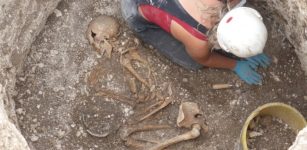 Bronze Age Human Remains Uncovered In Dorset During Excavation Of Iron Age Settlement
Archaeology | Jul 10, 2023
Bronze Age Human Remains Uncovered In Dorset During Excavation Of Iron Age Settlement
Archaeology | Jul 10, 2023 -
 Extraordinary Archaeological Discovery In Spain
Archaeology | Oct 10, 2023
Extraordinary Archaeological Discovery In Spain
Archaeology | Oct 10, 2023 -
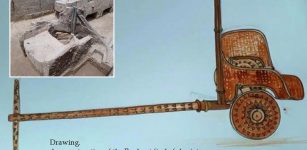 Three Bronze Age Chariots, Shields, Daggers And Decorated Coffins Unearthed In Northern India
Archaeology | Jun 7, 2018
Three Bronze Age Chariots, Shields, Daggers And Decorated Coffins Unearthed In Northern India
Archaeology | Jun 7, 2018 -
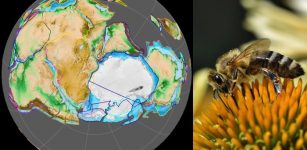 Bees Originated From An Ancient Supercontinent Millions Of Years Earlier Than Previously Thought
Evolution | Jul 31, 2023
Bees Originated From An Ancient Supercontinent Millions Of Years Earlier Than Previously Thought
Evolution | Jul 31, 2023 -
 DNA Reveals The History Of Modern And Archaic Humans Is Much Longer And More Complicated Than Previously Thought
DNA | Jan 2, 2025
DNA Reveals The History Of Modern And Archaic Humans Is Much Longer And More Complicated Than Previously Thought
DNA | Jan 2, 2025 -
 Beer And Hallucinogens Reinforced The State Of The Wari Culture
Archaeology | Jan 15, 2022
Beer And Hallucinogens Reinforced The State Of The Wari Culture
Archaeology | Jan 15, 2022 -
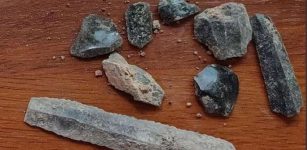 Tracking Prehistoric Relations With AI From The Middle Stone Age To Antiquity
Archaeology | Jul 14, 2023
Tracking Prehistoric Relations With AI From The Middle Stone Age To Antiquity
Archaeology | Jul 14, 2023 -
 Native Americans’ Visions Of Distant Explorers May Unravel Some Ancient Mysteries Of North America – The Arrival – Part 1
Ancient Mysteries | Nov 19, 2019
Native Americans’ Visions Of Distant Explorers May Unravel Some Ancient Mysteries Of North America – The Arrival – Part 1
Ancient Mysteries | Nov 19, 2019 -
 How Far South Did Prehistoric Highly Skilled Polynesian Seafarers Sail?
Archaeology | Nov 1, 2024
How Far South Did Prehistoric Highly Skilled Polynesian Seafarers Sail?
Archaeology | Nov 1, 2024 -
 Bighorn Medicine Wheel: Sacred Site And Ancient Solar Observatory
Civilizations | May 29, 2016
Bighorn Medicine Wheel: Sacred Site And Ancient Solar Observatory
Civilizations | May 29, 2016 -
 Ancient Secrets Of The Ukrainian Stonehenge That Is Older Than The Giza Pyramids Of Egypt
Featured Stories | Jul 17, 2021
Ancient Secrets Of The Ukrainian Stonehenge That Is Older Than The Giza Pyramids Of Egypt
Featured Stories | Jul 17, 2021 -
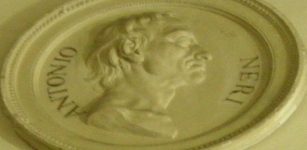 On This Day In History: Antonio Neri Was Born in Florence, Italy – On Feb 29, 1838
On This Day In History | Feb 29, 2020
On This Day In History: Antonio Neri Was Born in Florence, Italy – On Feb 29, 1838
On This Day In History | Feb 29, 2020 -
 Delphic Mysteries – Extraordinary Encounter At An Ancient Temple – Part 2
Ancient Mysteries | Apr 3, 2023
Delphic Mysteries – Extraordinary Encounter At An Ancient Temple – Part 2
Ancient Mysteries | Apr 3, 2023 -
 Andalusia Was First Inhabited By Neolithic People From The Southern Part Of The Iberian Peninsula 6,200 Years Ago
Archaeology | Feb 26, 2024
Andalusia Was First Inhabited By Neolithic People From The Southern Part Of The Iberian Peninsula 6,200 Years Ago
Archaeology | Feb 26, 2024 -
 Beautiful Ancient City Of Polonnaruwa With Hundred Of Tombs, Temples And Statues
Civilizations | Nov 12, 2018
Beautiful Ancient City Of Polonnaruwa With Hundred Of Tombs, Temples And Statues
Civilizations | Nov 12, 2018 -
 Function Of “Chopping Tools” Found At Prehistoric Site Of Revadim Israel – Studied
Archaeology | Jan 22, 2021
Function Of “Chopping Tools” Found At Prehistoric Site Of Revadim Israel – Studied
Archaeology | Jan 22, 2021 -
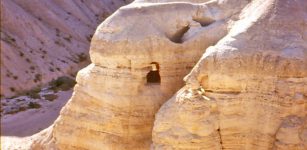 Ancient Religious Ceremony May Shed Light On The Mysterious Qumran Site
Archaeology | Sep 6, 2021
Ancient Religious Ceremony May Shed Light On The Mysterious Qumran Site
Archaeology | Sep 6, 2021 -
 Ancient Roman Settlement Discovered In Deal, UK
Archaeology | Dec 16, 2022
Ancient Roman Settlement Discovered In Deal, UK
Archaeology | Dec 16, 2022 -
 Louvre Museum’s Entire Collection Is Now Available Online To Anyone
News | Mar 31, 2021
Louvre Museum’s Entire Collection Is Now Available Online To Anyone
News | Mar 31, 2021

